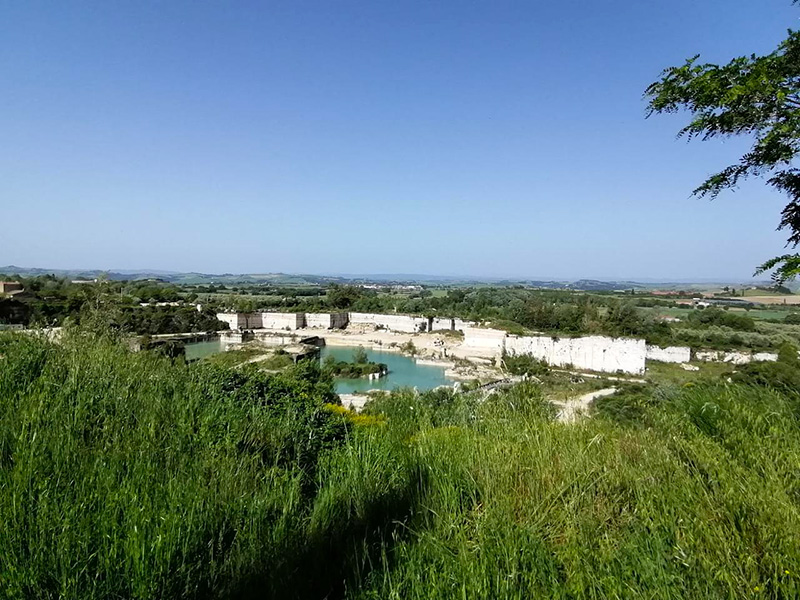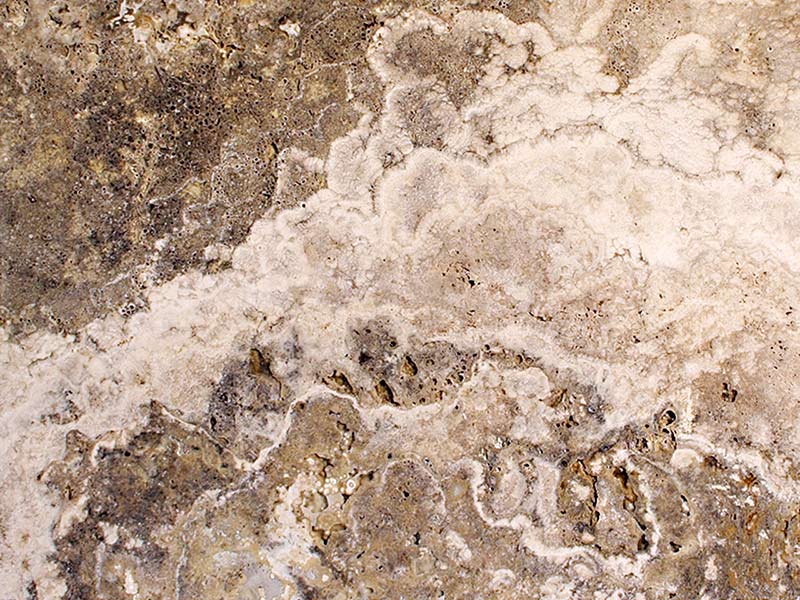







Where

Around Rapolano, the travertine quarries, known since Etruscan times, have profoundly and forever marked the landscape: they have carved the earth by excavating steep, sharp walls, they have created square, moon-white craters. A harsh, silent, in some ways eerie landscape, but one where nature, fearless, does not give up and slowly takes back the abandoned quarries, with vegetation meandering over the stone and with water that sometimes, surfacing from the stratum, floods a quarry, creating small green or turquoise lakes.
The stonemasons of Rapolano
Our grandparents and great-grandparents-almost all of them-worked at the quarries. They arrived from neighboring towns by bicycle, with lunch in their baskets or handkerchiefs, early in the morning. They spent the day toiling, with no protection and breathing in marble dust and micro-dust, which for many, including young people, meant serious and fatal illnesses. Still, the many archival photos show them smiling to us, on breaks from work, and proud. For some of them, the most specialized, the work in the quarry was highly remunerative: the stonemasons of Rapolano were known and in demand throughout Italy; the value and quality of the practical schooling they did in the quarry was undisputed.
 The almost lunar landscape creates a strong contrast with the surrounding meadows.
The almost lunar landscape creates a strong contrast with the surrounding meadows.The Via delle Cave
The Via delle Cave was a road connecting the medieval village of Serre di Rapolano with the nearby town of Asciano, and from there to the Valdichiana and the Arezzo area. It developed rapidly in the early twentieth century, when the extraction of travertine from the local quarries became industrial and provided employment for many local workers. The quarries had exponential growth until the 1970s and 1980s, when the crisis in the construction industry halted growth. A slow decline then began, which saw the closure or downsizing of many companies. Today, travertine remains one of the economic pivots of the municipality, supplanted, however, by the development of spa facilities in terms of induced activity.
The art of stone
From the quarries of Rapolano comes the travertine of many Renaissance churches, such as the cathedral of Pienza, the church of San Biagio in Montepulciano, or the church of Provenzano in Siena. Today there is an active school for sculptors and stonemasons, and for years Rapolano hosted young Japanese sculptors who came here in the summer to participate in training internships, practicing on our material: friable, not very resistant, easy to scratch (and just as easy to ruin). Some of their work is on display at the Water Park, in Rapolano, which is well worth a visit.
 Polished travertine terra chiara di Rapolano
Polished travertine terra chiara di RapolanoVettor Pisani
At the end of Via delle Cave, overlooking an abandoned quarry, stands a strange triangular building, now abandoned. It is the "Museum of Catastrophe," the home-atelier of Vettor Pisani (1934-2011), an eclectic artist who in 1995 had elected Rapolano as his place of the soul and initiated a project to pay homage to nature outraged by man and give it new life through art: drawing on the energy released by performances and projections in the quarries themselves, to make the stone pulsate again.
A walk on the moon
The invitation is to walk the Via delle Cave, from the medieval village of Serre di Rapolano to the house of Vettor Pisani, to get in touch with this lunar landscape, poised between horror and wonder. It is a short walk (half an hour round trip), flat, on a driveway, suitable for everyone. Best in May, when nature has awakened and Serre di Rapolano dives back into the Middle Ages for two weeks, with the medieval festival of Serremaggio.
Enter the Map of Italy's Undiscovered Wonders and find treasures where you least expect it... Inspire, Recommend, Share...
Collections
The Map thanks:
In the Community
Enter the Map of Italy's Undiscovered Wonders and find treasures where you least expect it... Inspire, Recommend, Share...
Where

Collections



